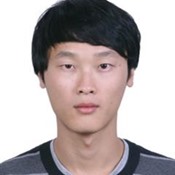Learning-Based Multiscale Self-Similarity Descriptors for Non-Rigid MRI-CT Liver Image Registration
Y Fu*, Y Lei, T Wang, J Zhou, M McDonald, J Bradley, P Patel, T Liu, X Yang, Emory Univ, Atlanta, GA
Presentations
MO-IePD-TRACK 4-4 (Monday, 7/26/2021) 5:30 PM - 6:00 PM [Eastern Time (GMT-4)]
Purpose: To propose a multi-scale image self-similarity descriptor for non-rigid MRI-CT liver image registration using deep learning-based network.
Methods: The lack of multimodal image similarity metric is one of the challenges in multimodal image registration. We propose to use multiscale image self-similarity descriptors together with deep learning networks for MRI-CT liver image registration. To capture both the global and local descriptors, a multiscale deep learning network was used. The original MRI and CT images were down-sampled by factors of 8, 4, 2 in a pyramid network architecture. CT and MRI image self-similarity descriptors were calculated by normalizing the image intensity differences in the superior-inferior, anterior-posterior and lateral directions. The normalization of the image similarity descriptor enables the calculation of cross-modality image similarity measure since they share the same gray scale levels for MRI and CT. Normalized cross correlation was maximized between the fixed CT and the deformed MRI using their respective multi-scale image similarity descriptors. We evaluated the proposed network on 40 patients’ datasets using five-fold cross validation. The trained network was able to predict the deformation that aligns the MRI to CT in a single shot.
Results: For evaluation purpose, the MRI liver contours were deformed using the predicted deformation to obtain the liver contours of the deformed MRI. For all patients, the average dice similarity coefficient of liver has increased from 0.89±0.04 before registration to 0.95±0.03 after registration. The alignment of hepatic vessels and liver boundaries have both improved after the proposed non-rigid image registration.
Conclusion: We have proposed a novel multiscale image self-similarity descriptor for MRI-CT liver image registration. Integrated into an unsupervised registration network, the proposed image similarity descriptors enable direct alignment of the MRI to CT images with high accuracy. This image tool may have a great potential on facilitating the liver radiotherapy treatment planning.
ePosters
Keywords
Not Applicable / None Entered.
Taxonomy
Not Applicable / None Entered.
Contact Email



